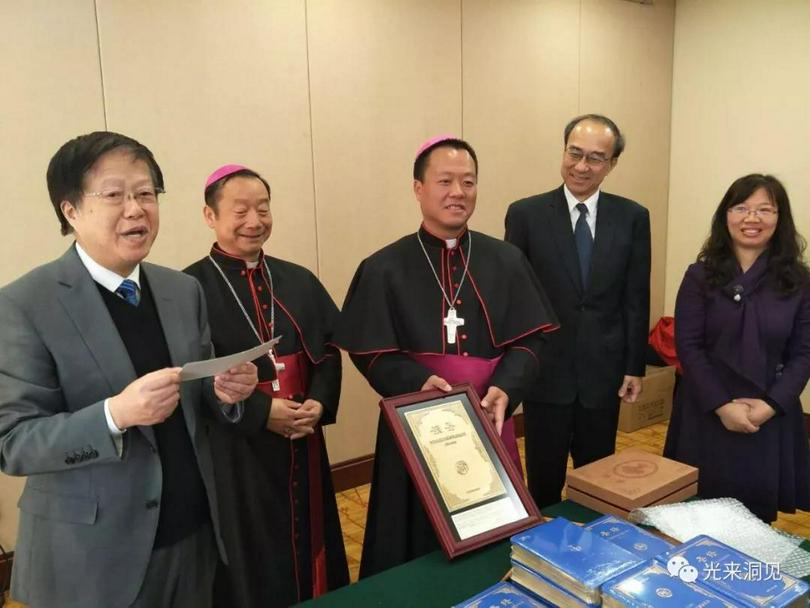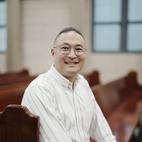The process of Chinese Bible translation by the Catholic Church in China followed a long, complex, and fascinating history. The earliest attempt to translate the New Testament and Psalms into the Mongolian language, the language of the Yuan dynasty (1278-1368), was made by John of Montecorvino, (1247-1328) Order of Friars Minor (OFM). After this, centuries went by before Catholic missionaries in China embarked on the challenging task of translating the Scriptures into Chinese and produced a complete Bible translation.
Unlike Protestant missionaries, who started to translate the entire Bible into Chinese immediately after arriving in China in the early ninteenth century, Catholic missionaries such as Franciscans, Dominicans, and Jesuits, during the Ming Dynasty (1368-1644), prioritized other liturgical and pastoral works. While these works may have included portions of the sacred Scripture, they cannot be considered proper translations.
Even when, in 1615, permission was granted from Rome to translate the Bible into Chinese (not using the vernacular, but rather the "erudite language proper to the literati"), missionaries never engaged in translation work. This was probably due to their insufficient knowledge of the Chinese language, lack of previous experience they could rely on, and the fact that the Catholic Church traditionally discouraged Bible translation into vernacular languages and instead promoted the Latin Vulgata for Mass and liturgical purposes.
In 1943, the Encyclical Letter, Divino Afflante Spiritu, by Pope Pius XII declared the supremacy of the original texts in respect for the Latin Vulgata for Bible translation. Later on, the Second Vatican Council (1962-1965) emphasized the centrality of the Bible in the life of the Church, including through translations in the vernacular languages.
Unpublished and Partial Translations
In the mid-seventeenth century, the Congregation for the Propagation of Faith started to apply more restrictive policies resulting in a number of partial translations that were made having to remain unpublished until the end of the ninteenth century. Most of these translations covered only the New Testament and were based on the Vulgata. Some used the vernacular language, which had the potential to facilitate greater access to the masses. Other translations were made in classical language which was traditionally used for literary genres and was instrumental in presenting the Bible as a text of the same dignity as the Chinese Classics.
There are two important translators that are worth mentioning for this period. Jean Basset (1662-1707), of the Society of Foreign Missions of Paris (MEP) translated the New Testament into classical Chinese (or wenli 文理) from the Latin Vulgata. Interestingly, he translated "God" and "Holy Spirit" respectively with shen 神 ("god" or "spirit") and feng 風 ("wind"). These were not among the terms debated in the context of the well-known Chinese Rites Controversy, which started at the beginning of the seventeenth century.
Notably, the Jesuits were in favor of indigenous terms such as shangdi 上帝 ("Supreme God") or tian 天 ("Heaven") as opposed to Franciscans and Dominicans supporting the neologism tianzhu 天主 ("Lord of Heaven"), which was eventually imposed by the papal bull Ex Quo Singulari (1847). At the time of Basset's translation, the controversy had not yet been resolved, and the translator is likely to have opted for terms not involved in the debate.
Basset's translation influenced later Bible editions, namely, the earliest Protestant translations by Robert Morrison (1782-1834) and Joshua Marshman (1768-1837) published in the 1820s. His translation also influenced the first ever complete Catholic Bible, the Sigao Shengjing 思高聖經. This was translated under the leadership of an Italian Franciscan friar, the Blessed Gabriele Maria Allegra, OFM (1907-1976), and published by the Hong Kong-based Studium Biblicum Franciscanum in 1968.
Louis de Poirot (1735-1813), of the Society of Jesus (SJ), was the author of the earliest translation ever made in Mandarin (around 1790) and the most complete Catholic translation in Chinese at the time, unusually including portions of the Old Testament. Inspired by St. Jerome's use of "vulgar," he adopted some extreme forms of colloquial expressions. Father Allegra took photographs of De Poirot's version to be used as a reference to his translation work.
Published Translations during the Twentieth Century
From the twentieth century onwards, translations started to be published but continued to focus mainly on the New Testament. Among the most meaningful attempts, Joseph Hsiao Ching-shan (Xiao Jingshan, 蕭靜山, 1855-1924), SJ, translated the New Testament into Mandarin from the Vulgata. Xiao's translation was first published in 1922, a few years after the May Fourth Movement of 1919 (which raised the status of baihua 白話 or vernacular language) and the concomitant publication of the Union Version (Heheben和合本) in Mandarin, the most popular Protestant translation.
In 1924, at the First Plenary Council of Shanghai, Chinese Catholic Church leaders noted that there was no complete Chinese Bible translation or Old Testament available in Chinese for Catholics. It was decided to form a translation committee and use the national language (guoyu 國語) to translate the Bible; however, this plan never materialized due to a lack of qualified people knowledgeable of biblical languages. In 1943, the already mentioned Encyclical Letter, Divino Afflante Spiritu, was issued. In 1956, a revision of Xiao's translation was published based on the Greek text.
Among the revisions was the shift from the transliteration of "verbum" (wuerpeng 物尔朋) to the translation of logos with the neologism shengyan聖言 (and not with dao 道, used across Protestant translations since 1835). Xiao's translation was the most widespread Chinese Catholic edition until the 1990s when it was replaced by the Sigao Shengjing.
Ma Xiangbo 馬相伯 (1840-1939), a well-known patriot, scholar, and educator, completed a translation of the Gospels in classical Chinese just two years before his death, using a Latin version as a textual basis. John Wu Ching-hsiung (Wu Jingxiong) 吳經熊 (1899-1986), a jurist and ambassador to the Holy See, translated the Psalms and the New Testament in poetic forms of classical Chinese, producing what is often considered the best literary Chinese Bible translation ever made. Probably because Chiang Kai-shek (Jiang Jieshi 蔣介石), a Methodist, sponsored and revised Wu's translation, it was influenced by some terminology adopted in Protestant versions including the use of dao for logos.
The First Complete Catholic Bible
After three decades of work, the Sigao Shengjing was published as individual books in 1961 and in one volume in 1968. Father Allegra committed himself to this enterprise in 1930 when he came to realize that, unlike the Protestants, Catholics had not yet translated the full Bible into Chinese. However, while published in Hong Kong, the Sigao Bible was not authorized for printing in mainland China for over two decades.
Based on the original texts, the Sigao translation is appreciated for its elegant style, accuracy, and fidelity. Despite its emphasis on formal renderings-sometimes to the detriment of fluency-after more recent publications of other translations, at the time of its fiftieth anniversary (1968-2018), the Sigao Bible continues to be the most popular and reputable edition among Chinese Catholics.
"Post-Sigao" Translations
The Today's Chinese Version (in Chinese Xiandai Zhongwen Yiben 现代中文译本) is an inter-confessional, Protestant-Catholic edition published in the beginning of the 1980s. Based on its English-equivalent version, it is published in two separate editions that differ only for the terms used for "God" and "Holy Spirit" (respectively Shangdi or Shen and Shengling in the Protestant edition; Tianzhu and Shengshen 圣神 in the Catholic edition). Meaningfully, both editions adopt the term dao used by the Protestants in place of the traditional Catholic term shengyan for logos.
La Bible de Jérusalem; hence, this edition is also known as the Yelusaleng Shengjing (耶路撒冷圣经). Bishop Jin must have felt an urgency to make this translation as he started immediately after being released from prison and continued after becoming a bishop.
At the time he started, Chinese Catholics still used the New Testament edition by Father Xiao Jingshan because the Sigao Bible had been authorized in mainland China only in the 1990s, just two years before Bishop Jin's edition was published in one volume. However, even after the Sigao Bible was available in China, Bishop Jin launched a major revision process of his translation that was completed in 2004. In 1991, he reportedly said that "the Bible is for today's people and therefore it needs new translations so as to keep up with the current use of the language and be read more smoothly."[1] The Chinese Jerusalem Bible is characterized by a fluent style, expressions typical of Shanghai (generally less appreciated by people from northern parts of China) and more "Chinese" features, some of which distance it from the Sigao translation (such as the choice of the term dao for logos).
Lack of a missal in Chinese according to the post-Vatican II liturgy, (adopted in mainland China from Hong Kong or Taiwan in the beginning of the 1990s), was also another reason behind Bishop Jin's move to engage in the translation work. In those years, he indicated that he would use his translation for the liturgy as some wordings from China might be different from those used outside the mainland. Bishop Jin's translation is widespread in Shanghai and neighboring dioceses but has not challenged the authority and the popularity of the Sigao Bible.
The Pastoral Bible (Muling Shengjing 牧灵圣经) was published at the end of the 1990s in Hong Kong and then in mainland China. The translation work was coordinated by the French Claretian father, Bernard Hurault (1924-2004), together with a group of Chinese translators, on the basis of his experience as translator of the popular Biblia Latinoamericana, which aimed at a simple and clear translation combined with pastoral explanatory annotations.
Based on editions in Western languages, the Pastoral Bible attracted some criticism: the theological and biblical formation of the translators was questioned and inaccuracies were found in the translation and commentary. Despite this, the Pastoral Bible gained some popularity but has never replaced the Sigao translation.
Conclusions
The Catholic missionary community in China started to translate the entire Bible late compared to Protestants although para-biblical texts were included in their written works. The first Catholic complete Bible from the original texts was published at the end of the 1960s, much later then the earliest Protestant translations by Marshman and Morrison dating back to the 1820s. This could be explained by the fact that traditionally the Catholic Church discouraged Bible translation in the vernacular until the Second Vatican Council whereas Protestants have always placed emphasis on the Sola Scriptura principle and personal scripture reading.
A challenge faced by the earliest Catholic translators was that they had no precedents to use as a reference; on the contrary, their works were known by Protestant translators and influenced their translations, especially in the beginning.
The Sigao Shengjing remains the most commonly used and reputable Catholic edition in China. The time has yet to come when a Bible translation initiated and led by the Chinese has acquired the same acceptance and popularity.
Bibliography
Choi, Daniel K.T. and Mak, George K.W. "Catholic Bible Translation in Twentieth-Century China: An Overview." In Catholicism in China, 1900-Present, edited by Cindy Yik-yi Chu. New York: Palgrave Macmillan, 2014.
蔡錦圖 (D. Choi). 天主教中文聖經翻譯的歷史和版本 (The History and Editions of Catholic Chinese Bible Translations). 天主教研究學報 (Hong Kong Journal of Catholic Studies), 2011.
Chu, Yik-yi C. The Catholic Church in China: 1978 to the Present. New York: Palgrave Macmillan, 2012.
Foley, Toshikazu S. Biblical Translation in Chinese and Greek. Leiden Boston: Brill, 2009.
Romano, M. "The Sheshan New Testament Translation by Bishop Jin Luxian of Shanghai." In Foreign Missionaries and the Indigenization of the Chinese Catholic Church, edited by Cindy Yik-yi.Chu. Hong Kong Baptist University, April 2017: 125-170.
Romano, M. "Translating the Bible into Chinese: The Contribution of Chinese Translators." In Shaping Christianity in Greater China, edited by Paul Woods. Regnum: Oxford Center for Mission Studies, 2017: 98-111.
Standaert, N. "The Bible in Early Seventeenth-Century China." In Bible in Modern China. The Literary and Intellectual Impact, edited by Irene Eber and others. Sankt Augustin: Monumenta Serica Monograph Series XLIII, 1999: 31-54.
Starr, C., ed. Reading Christian Scriptures in China. London: T&T Clark, 2008.
Zetzsche, J. O. The Bible in China. The History of the Union Version or the Culmination of Protestant Missionary Bible Translation in China. Sankt Augustin: Monumenta Serica Monograph Series XLV, Monumenta Serica Institute, 1999.
Notes
1. "Shanghai needs its own Chinese Language Missals, says Bishop Jin," UCANews, January 17, 1991, http://www.ucanews.com/story-archive/?post_name=/1991/01/17/shanghai-needs-its-own-chineselanguage-missals-says-bishop-jin&post_id=31858.
Originally from the China Source
CCD reprinted with permission












